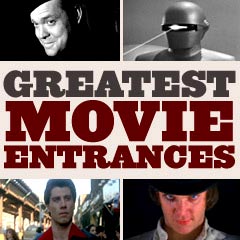
|
Entrances of All-Time 1986-1989 |
![]()
| Movie Title/Year and Film Character with Scene Description | ||||||||
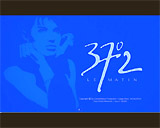
|
Betty Blue (1986, Fr.) (aka 37°2 Le Matin)
Director Jean-Jacques Beineix's erotic drama was a big commercial hit in France. Its French title was the morning temperature 37.2 degrees (Celsius) (or 99 degrees Fahrenheit) of a pregnant woman. The emotional, nihilistic French sex drama, nominated for Best Foreign Language film, was noted for its opening - an ardent, extended thrusting love-making scene set in a beachside shack at Gruissan in S. France - filmed with a two-minute slow-zoom toward an uninhibited couple who were lying sideways on a bed beneath a portrait of the Mona Lisa. The lovers were:
The subtitles translated Zorg's ominous words: "I had known Betty for a week. We made love every night. The forecast was for storms." The next time he saw her, she climbed the steps to his elevated house, seen first by her feet, deposited her one suitcase and purse, and greeted him - wearing a braless summer dress:
Although he kissed her, he wasn't pleased to see her so unexpectedly. She called all men "bastards" and pushed him away. She was planning to move in with him:
He brought her things in from the door and put them on the bed, causing her to smile. He described her: "She was a flower with psychic antennae and a tinsel heart. Not many girls could dress as casually as she did." |
  
|
||||||
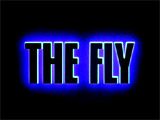
|
The Fly (1986)
The film opened on teleportation scientist Seth Brundle's (Jeff Goldblum) wide-eyed face, as he flirted with beautiful reporter Veronica Quaife (Geena Davis) during a scientific convention:
He suggested that she accompany him back to his lab for a home-made cappuccino, but when Veronica demured and walked away, he followed and insisted: "I think you're making a mistake. I think you really want to talk to me." She responded: "Sorry, I have three other interviews to do before this party's over." Seth convincingly reiterated: "Yeah, but they're not working on something that'll change the world as we know it." When Veronica replied: "They say they are," Seth said with confidence: "Yeah, but they're lying. I'm not." |
 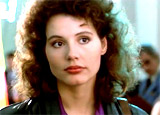
|
||||||
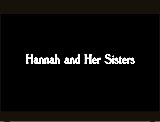
|
Hannah and Her Sisters (1986)
The first shot of the film was an extended, medium shot of the ravishing, youthful Lee (Barbara Hershey) in her grey sweater, the object of desire for Elliot (Michael Caine) - the bored husband of her sister Hannah (Mia Farrow). In voiceover, he pined for her, as the camera (representing Elliot's point-of-view) followed her around the room:
When she squeezed by him in a doorway earlier with a tray of hors d'oeuvres, he admitted:
|
  
|
||||||
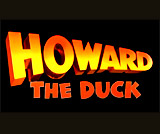
|
Howard the Duck (1986)
The clever opening credits sequence, accompanied by bluesy music reminiscent of the neo-noir film Body Heat (1981), was set in Howard T. Duck's Marshington DC apartment (3636 Lakeside Dr.). It was located on a "duck" egg-shaped version of Earth. The anthropomorphic title character entered his apartment and placed his keys (only his feathered white duck wing was visible) on a table with framed duck family photographs. The camera followed him around his home, with duck-versions of everything:
Eventually, the camera showed Howard sitting in his armchair smoking a cigar and drinking a beer while watching TV (and clicking with his remote through the channels, including duck versions of the $64,000 Pyramid, soap operas and commercials), and removing the latest issue of Playduck Magazine from a brown-wrapper to look at the nude duck centerfold Miss October ("My little airbrushed beauty"). Suddenly after feeling quaking, he was expelled from his armchair through the length of his building (through the hallway and other people's residences, including through a bathroom with a topless duck in a bathtub) into outerspace - and eventually landed in Cleveland. |
  
|
||||||
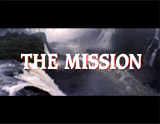
|
The Mission (1986, UK)
This historical drama (winner of the Cannes Film Festival's Palme d'Or and Oscar winner for Best Cinematography) was set in the mid-1700s. It began by telling about the strenuous efforts of Jesuits in the Catholic Church to convert natives ("Indians still existing in their natural state", e.g., the Guarani) in South American jungle areas to Christianity and to bring civilization. The film opened, before the credits, with Cardinal Altamirano (Ray McAnally) dictating a description of the state of affairs regarding the missionary efforts. It presented an evocative image of a martyred Jesuit missionary, crucified and tumbling 200 feet to his death over Iguazu Falls - a massive waterfall:
During the title credits, a new Spanish Jesuit priest, Father Gabriel (Jeremy Irons) arrived, as the dictated letter continued (in voice-over):
Father Gabriel kissed the stone shrine to mark the priest's place of death, and then proceeded to scale the jagged rock cliffs surrounding the waterfall, to enter the plateau where the Guarani native community lived (he vowed: "I have to go up there myself"). |
  
|
||||||

|
Something Wild (1986)
In Jonathan Demme's off-beat, screwball road film and romantic drama, Melanie Griffith starred as unconventional, free-spirited, wild and sexy Audrey Hankel. The kooky, black-wigged Audrey was nicknamed Lulu, after actress Louise Brooks' femme fatale (from Pandora's Box (1929)). She was first viewed in a NY streetcorner diner, where she was reading a book on Mexican artist Frida Kahlo and watching another customer - staid and married, yuppie, NYC tax consultant and bond trader Charles Driggs (Jeff Daniels) finishing his lunch.
She noticed that he deliberately did not pay his check before leaving and accosted him outside, although he claimed he was preoccupied and forgot. She realized that he was a kindred spirit ("You're a closet rebel"). She took off with him in her car ("Ready or not, babe"), convincing him to take the Friday afternoon off from work ("You deserve it, really!"), and they traveled together through the Holland Tunnel to New Jersey, as she began drinking directly from a bottle of Seagrams 7. After getting a room in a motor lodge, she engaged in kinky sex with him - handcuffing him to a motel bed and making love to him while forcing him to call in sick to his boss. During an unforgettable road trip to Pennsylvania, they arrived at her small-town suburban home in Pennsylvania, where she gave her real name as Audrey when she introduced Charles as her husband to her square mother Peaches (Dana Preu). Audrey stated: "He's just the kind of man you always said l should marry." But Peaches guessed that he probably had a real family elsewhere, and that their 'marriage' wasn't real. She also warned Charlie that Audrey was unreliable: ("She's got some strange notions about life"). Audrey (now a blonde after removing her bobbed dark brunette wig) announced that they would be attending her class of 1976's 10-year HS reunion ("Spirit of '76 Revisited"). At the gathering, Audrey falsely stated that they were husband and wife with two children. Then about 50 minutes into the film, there was the surprising appearance of Audrey's dangerous, violent, and greasy ex-con husband Ray Sinclair (Ray Liotta in his feature screen debut) who had just been released from prison. As Audrey and Charlie were dancing and kissing, another couple suddenly slid behind them, and Ray leaned over to speak to her: "Hi, baby. Surprise!" He had a menacing look on his face, as he leered at them, and Audrey urged: "Let's just go." In the lobby, they formally met Ray and Irene (Margaret Colin), his date. A closeup of Ray's pock-marked, dead-eyed, angry face hinted that there would be trouble, and Audrey tried to leave. The foursome left the reunion together in the same car. He later told Audrey in private: "I missed you so god-damn much! Every sweet little part of you...You should've never quit me, baby." |
  At Audrey's 10th HS Reunion    Sudden Appearance of Ray Sinclair At the 10 Year Reunion with Date Irene  Ray Confronting Audrey |
||||||
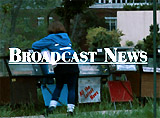
|
Broadcast News (1987)
The film's ironic prologue introduced the formative childhoods of the Oscar-nominated trio of future broadcast news professionals:
|
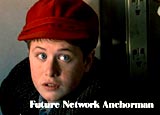 
|
||||||
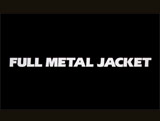
|
Full Metal Jacket (1987)
As an introduction to the second half of the film set on the warfront in Vietnam, there was the striking entrance of a hip-swiveling, mini-skirted Vietnamese prostitute/hooker (Papillon Soo) in Da Nang (viewed from behind as she walked down the street) to the tune of Nancy Sinatra's feminist song: "These Boots Are Make For Walkin'." She approached Stars & Stripes correspondents Pvt. Joker (Matthew Modine) and Pvt. Rafterman (Kevyn Major Howard) drinking beers at an outdoor cafe and propositioned them:
As Joker's buddy took a picture, another young Vietnamese man suddenly came up from behind and stole his expensive camera, and escaped on the back of a friend's motorcycle. |
    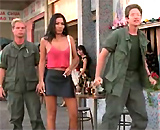
|
||||||

|
Raising Arizona (1987)
During a nightmarish and sweaty dream, petty crook and baby-kidnapper H.I. "Hi" McDunnough (Nicolas Cage) had a "haunting vision" of "the Lone Biker of the Apocalypse." He was a menacing, heavily-armed, almost supernatural bounty hunter named Leonard Smalls (Randall 'Tex' Cobb), who brought impending doom and justice. He emerged from a blazing, orangish-yellow fireball on his motorbike, with two rifles strapped across his back, and left in his wake a scorched Earth trail as he flew forward. The combination Hell's Angel biker and horseman of the Apocalypse
He had a tattoo of a skull on his arm emblazoned: "MAMA DIDN'T LOVE ME," and as he rode by an unsuspecting cottontail rabbit by the side of the road, he blew it up with a hand-grenade and shot at a lizard:
|
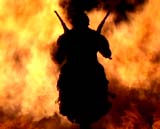    
|
||||||

|
The Adventures of Baron Munchausen (1988)
One of the most breathtakingly romantic and sensual entrances was this one -- the entrance of Venus with homage to the famous The Birth of Venus painting of 1482 by Sandro Botticelli with a live-action recreation. In the scene, a giant closed clamshell was slowly brought up from a watery pool by two angels and when opened, it revealed a fully nude, angelic-faced Venus (Uma Thurman) in the same pose as her counterpart from the painting. Her long tresses and left hand covered her crotch and one arm covered her breasts. She gazed at the visiting Baron Munchausen (John Neville) and his friends, and greeted simply with a melodic voice: "Hello." The two angels then flew to her and wrapped her in strands of pinkish silk to form her new dress. Roman god Vulcan (Oliver Reed) then nervously and jealously introduced her after giving her air kisses -- telling the overwhelmed Baron:
|
  
|
||||||
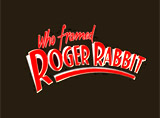
|
Who Framed Roger Rabbit (1988)
In one of the high points of the film, out from behind a spotlight on blue curtains emerged the throaty, smokey blues sound of Jessica Rabbit singing (voice of Amy Irving) Why Don't You Do Right? Her sexy leg and ample breasts appeared first - from behind the curtain - as she began her song and stepped out. Eddie Valiant (Bob Hoskins) was transfixed and entranced by the beautiful Toon (voice of Kathleen Turner) - her bright pink, slinky, high-cut gown sparkled and shimmered brilliantly. Looking very little like a rabbit and more like a cartoon-animated movie star, a combination Playboy bunny, Lauren Bacall and 40's peek-a-boo actress Veronica Lake, the buxom, red-haired chanteuse swept out onto the stage and soon slinked into the audience while singing. The patrons hooted and whistled at her. Jessica reached her fingers inside Eddie's trenchcoat, removed his fedora, seductively tantalized him, sat on his table with her statuesque chest bursting out in front of him, leaned closer to him, and pulled his necktie toward her as she finished her song, cooing:
|
  
|
||||||
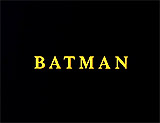
|
The first full view of the newly-transformed mob enforcer Jack Napier (Jack Nicholson) - now known as the Joker - occurred after he fell into a large vat of acidic toxic chemicals in a factory during a set-up. The Joker entered boss Carl Grissom's (Jack Palance) office, hidden in the dark, where he accused Grissom of a frame job: "You set me up over a woman! A WOMAN!" and muttered (ironically): "You must be insane." When Carl realized Jack meant to kill him, he angrily shouted out: "Your life won't be worth spit!" The Joker replied musingly: "I've been dead once already. It's very liberating, if you think of it as, uh, therapy." When Carl tried to reason with him: "Jack, listen, maybe we can cut a deal," the Joker answered acidly: "Jack?" and stepped into the light for the first time. In the light, he revealed his grotesquely transformed visage -- a deathly, pure white face, green hair and an impossibly wide, hideous, permanent grin with blood-red lips. The Joker announced ominously: "Jack is dead, my friend. You can call me... Joker! And as you can see, I'm a lot happier!" The Joker then clownishly shot Carl repeatedly, bouncing and hopping balletically, and twirling around. After killing his former boss, the Joker sighed nonchalantly: "Oh, what a day!" |
 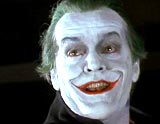 
|
||||||
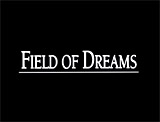
|
Disgraced ballplayer Shoeless Joe Jackson (Ray Liotta) - who had been banned from 'America's pasttime' during the 1919 Black Sox scandal, made a memorable mystical appearance (or materialization) in a baseball field built in an Iowa cornfield by farmer Ray Kinsella (Kevin Costner). The sighting of the dead baseball player, idolized by Ray's father, occurred after Ray's daughter Karin (Gaby Hoffman) told him one evening:
Ray's wife Annie (Amy Madigan) encouraged him to go on outside, while she made coffee. The shadowy figure knelt down in the grassy ball park and touched the grass, then was amazed as Ray switched on the park's lights to illuminate him. He turned to face Ray as he strode onto the field, and nodded in acknowledgement. Ray hit some practice balls to him in the outfield, and after they introduced themselves to each other, they chatted:
He asked to be pitched to ("Can you pitch?") - so he could hit some. After knocking out lots of pitches, the awestruck Joe remembered how wonderful it was to have played baseball:
Soon after, although invited to come inside the farm house by the family, he declined, but then asked: "Can I come back again?" He was planning to return with seven other banned players on his team who also missed the game. Just before his departure, before trotting off toward a surrounding cornfield and disappearing in the darkness of the tall corn rows, he asked: "Hey, is this heaven?" Ray smiled: "No, it's Iowa." |
    
|
||||||

|
At a time when Ray was considering selling the farm for financial reasons, he was urged not to sell. Shoeless Joe Jackson grinned and then mentioned: "If you build it, he will come." As Joe looked toward home plate, suddenly, there was a secondary appearance of Ray's ghostly and estranged father John Kinsella (Dwier Brown), who removed his catcher's mask. Ray reacted with great surprise:
The voices were actually Ray's own internalized desire (Ray: "It was you." Joe: "No, Ray. It was you.") to allow his father to meet his granddaughter Karin (Gaby Hoffman), and to enjoy a game of catch between father and son one more time as the sun set. The film ended with a stream of cars (and headlights) approaching the ballfield in the middle of an Iowa cornfield, signaling that Ray wouldn't lose his farm after all. |
  
|
||||||

|
Henry V (1989, UK)
This film had one of the most spectacular Shakespearean entrances in film history. When the music swelled (both ominous and grand at the same time), a black silhouette of a figure appeared, framed through towering portal doors of the palace that swung open. It was the king, Henry V (Kenneth Branagh), dramatically backlit and wearing a flowing black cape - reminscent of Darth Vader's entrance in Star Wars (1977). His bishops and courtiers gazed at the distant monarch in absolute, rapturous awe, as if he was godlike, as he approached (directly toward the camera until blackening the doorway), passed by and sat on the throne. Then shortly after, with the camera on his face, Henry V addressed the council and summoned the Archbishop of Canterbury (Charles Kay), telling him:
|

|
||||||
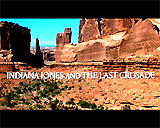
|
Indiana Jones and the Last Crusade (1989)
The father of young "Indy" Jones (River Phoenix), Dr. Henry Jones, Sr. (Sean Connery), was first seen absorbed in his medieval studies work in his small-town home in 1912 - although his face wasn't revealed when Indy interrupted him holding up the Cross of Coronado. A full view of him came much later in the film when adult "Indy" Jones (Harrison Ford) in 1938 went looking for his kidnapped father, project leader for recovery of the Holy Grail, who was being held by Nazis at Brunwald Castle on the German/Austrian border. "Indy" crashed through the wooden shutters of the room's window where his father was imprisoned. A large antiquities vase (from the late 14th century, Ming Dynasty) was smashed over his head. His father had protectively broken the rare vase without knowing it was his son coming to the rescue. He stepped out of the shadows and asked: "Junior?" Indy answered reflexively: "Yes, Sir," although he added with an irritated tone: "Don't call me that, please!" |
  
|
||||||
(chronological, by film title) Introduction | 1920s-1935 | 1936-1939 | 1940-1945 | 1946-1949 | 1950-1955 | 1956-1959 | 1960-1965 | 1966-1969 1970-1975 | 1976-1979 | 1980-1985 | 1986-1989 | 1990-1995 | 1996-1999 | 2000-2005 | 2006-Present |